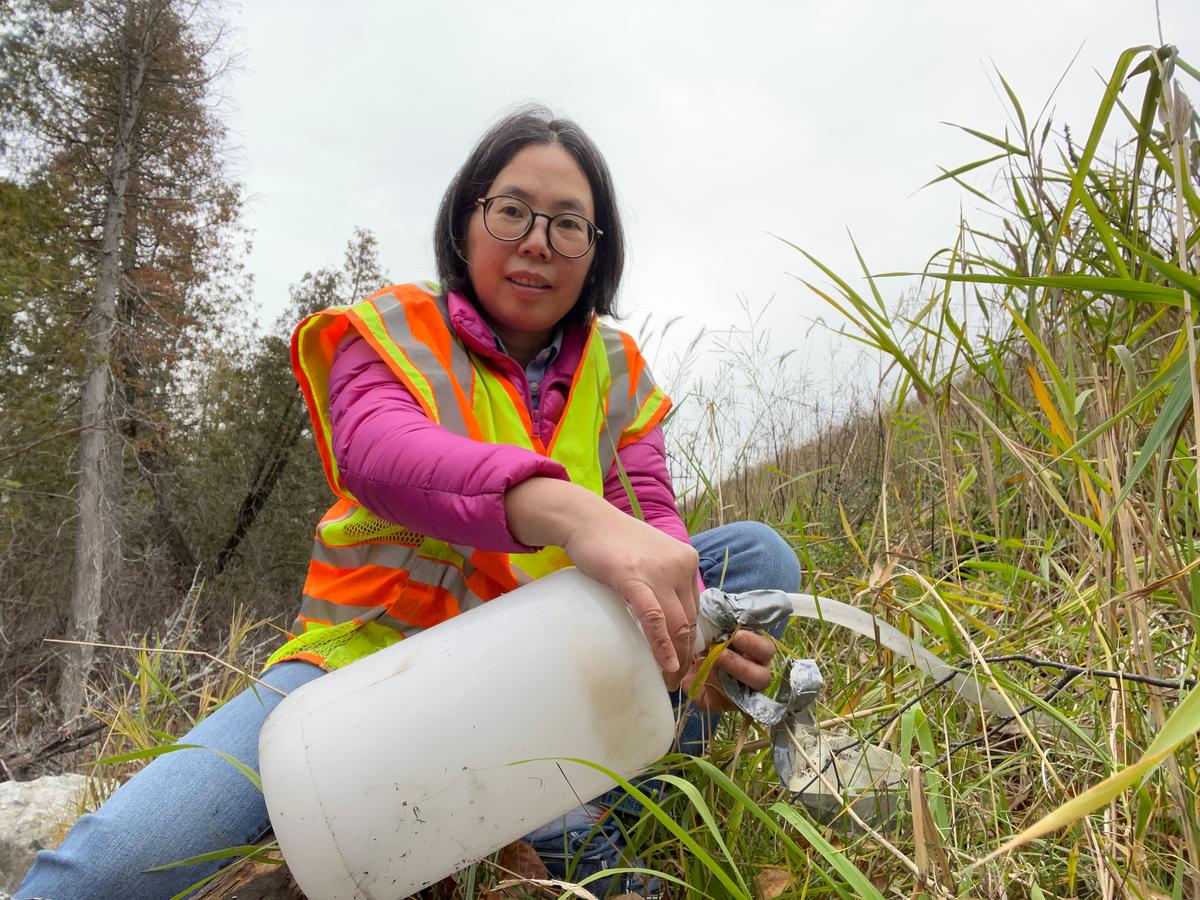Sometimes it really does take a village. In Mei Cai’s case, it’s community – colleagues, city leaders, water treatment facility workers and college students.
Many hands helped Cai, with project co-leader Shashi Rao, complete a three-and-a-half-month pilot trial of a sulfate reduction technology that meets Minnesota’s strict sulfate level discharge regulations. The team effort included NRRI geologists, engineers, technicians and University wastewater expertise.
“Our project pulled together many experts across NRRI and the University. The local communities also gave us large support in our field pilot trials,” said Cai. “And the project could not be done without the undergraduate and graduate students who helped operate the system and performed repeated tests.”
Waste Not
Cai is an environmental engineer, statistician and Geographical Information Systems analyst. She joined the NRRI team in 2012 after starting her career as a post-doctoral researcher at the University of Tennessee – Knoxville, working on long-term acid rain effects on water and soil in the Great Smoky Mountains. Now she is leading one of three sulfate reduction projects at NRRI to help Minnesota meet this challenge.
What’s exciting for Cai is using waste and other cost-effective materials and technologies to solve water quality issues. The current go-to technology for removing sulfate from water systems is reverse osmosis, which is very expensive and unattainable for small municipalities or businesses. Meanwhile, Minnesota requires sulfate levels to be no more than 10 parts per million for water discharged into wild rice waters to protect this sensitive plant.
“We verified during our pilot trials that this technology reduces sulfate from 60 to 120 parts per million to below ten,” said Cai. “There have been very few studies evaluating sulfate reduction technologies in such low concentrations, such as below 200 parts per million, so this is really new.”
The chemical precipitation system was scaled up from lab experiments to a pilot-scale that was deployed in a large trailer and tested at two municipal water treatment facilities this past summer. Next spring it will be deployed again at a mining pit lake to treat sulfate in combination with a microbial treatment system, one of the other sulfate solutions NRRI is developing.
Runoff Clean Up
Waste materials were also used in a project Cai worked on to filter contaminants in stormwater runoff from roads and parking areas. Vehicle traffic, atmospheric deposition and winter road maintenance contribute pollutants that can leach into groundwater systems. Left-over and salvaged peat, taconite tailings and street sweepings were evaluated for chemical properties and effectiveness for stormwater filtering. Lab tests and field trials led to recommendations for implementation to the Minnesota Department of Transportation.
Central Support
The large sulfate project has many moving parts – literally, it’s on a mobile trailer – and is kept on track by Matt Mlinar, Portfolio Management Office manager.
“All his work helped us move the project along on track and under budget while achieving successful results,” said Cai.
Many orders for equipment, supplies and chemicals were expertly handled by Tammy Thomasson-Ehrhart, principal office specialist.
“Tammy helped us place the orders immediately, find the right suppliers, contact them to fit our timing needs and give us order updates,” Cai said. “It was invaluable to have the help of these two professionals.”
Photo above: Mei Cai collects stormwater samples to monitor the performance of waste material along a newly constructed road. The filtration media is a mixture of salvaged peat and compost.
